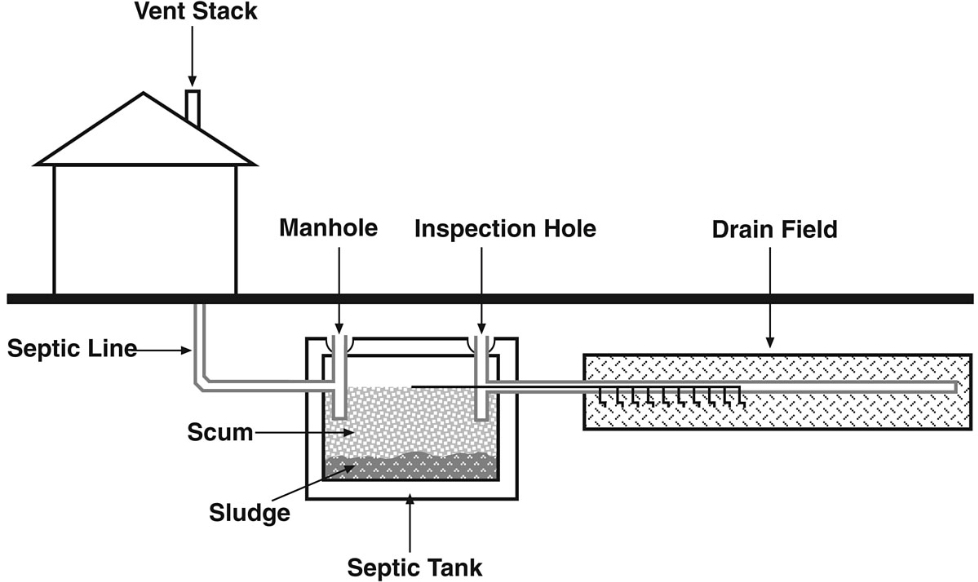

You can measure the levels by inserting a long wooden pole into different areas of the tank. Once located and accessed, a septic contractor measures the liquid levels in the tank before deploying any septic tank cleaning tools. Signs of possible septic tank failure include: lush vegetation, soft spongy ground, a sewage odor, or effluence at the surface. Find the tank’s end opposite the house, then follow the drain lines to the leach field.
FIND A SEPTIC SYSTEM DESIGNER HOW TO
Just be careful when using a septic tank probe rod in soft or wet soil, as probing or digging over a failing septic tank can cause a fatal cave-in, or send effluent right to the surface and possibly release dangerous, toxic odors.Ī septic probe can also be used for determining how to locate septic tank field lines. In some cases, they may use an electronic probe to locate the tank.

Then, they follow the lines to the buried septic tank. Once a septic contractor determines where the sewer pipe exits the home, they typically insert a thin metal rod or steel probe rod into the ground 10 to 15 feet away from the foundation to find the drain lines. In general, septic contractors use a soil probe rod or ground probe rod to detect buried drain lines on a customer’s property. Also, be careful to not use backhoes, wrecking bars, or jackhammers to excavate in areas where dangerous utility lines may be buried or in areas weakened by septic tank failure. Just keep in mind, this service may cost customers more.Ī note of caution: When using metal detectors or electronic septic tank locator tools, be aware of older properties with multiple buried wires and pipes that can produce false readings. Ground-scanning radar, often used by companies to locate buried oil tanks, can also be used as a septic tank sensor. Typically, you’ll locate the septic tank wherever the signal on the septic locator transmitter is strongest. Other options used as a septic tank locator device include:įlushable septic tank locator-flush an electronic septic tank locator down the toilet and track its signal with a receiver. The cleanout snake stops once it reaches the septic tank, and you can use a metal detector to locate the end of the snake. Some septic tanks don’t have enough metal to detect, so you may need to run a plumbing cleanout snake down the sewer line. Metal septic tanks or metal septic tank covers can be found with a metal detector.Ī concrete septic tank can be found by using a metal detector to locate its steel reinforcement bars. For instance, explore ways on how to find a septic tank with a metal detector: If visual clues fail, it’s time to try using other septic tank locating equipment. Septic tanks are usually located within 10 to 25 feet away from the house, and typically no closer than 3 feet away.

Some visual clues can serve as a simple septic locator-such as snow melt, rectangular depressions in the soil, areas of less grass growth or lush growth, or pipes sticking out of the ground anywhere from 10 to 20 feet from the home.

The remaining liquid effluent flows out of the tank into a drain field. Solid matter sinks to the bottom and forms sludge, while fats, oils, and grease rise to the top as scum. Typically buried underground and constructed from concrete, fiberglass or polyethylene, a septic tank serves as a holding tank or separation chamber for wastewater flushed down drain pipes. Visual inspection of baffles, tees, and walls We flush out more information on each below, so you can dig into the details and see what your septic service still needs to succeed. The Septic Tools Listįirst, a quick look at the list of 23 best tools for septic tank service providers. Prepare your septic tank technicians to do this dirty job right the first time, with these essential septic tank tools. » Want to grow your septic tank business? Click here to get a demo. Homes with septic systems are typically located in suburban and rural areas with no hook-ups to a centralized public sewer system, although one-third of all new development includes septic or decentralized treatment systems. depend on septic systems to treat their wastewater. Septic tank service providers must also protect themselves from various health hazards, such as infectious diseases, dangerous gases, and electrical shock.Īccording to the Environmental Protection Agency, more than one in five households in the U.S. Inspecting, maintaining, or installing septic systems requires the right septic tools to keep customers’ home waste systems clean and in good working order.


 0 kommentar(er)
0 kommentar(er)
